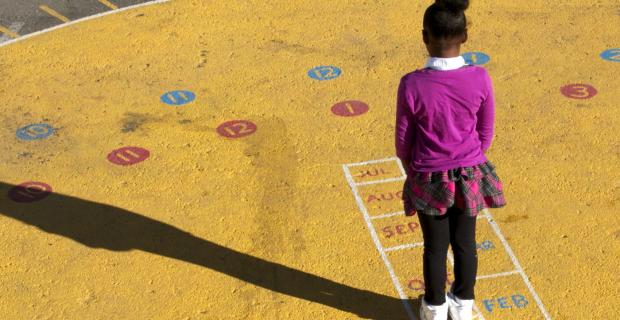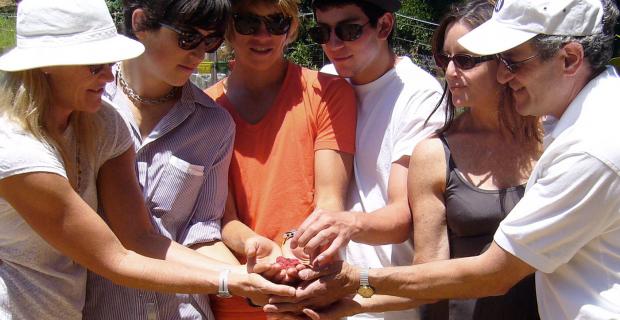Life and Leadership for a Sustainable Community

Sustainability is not an individual property, but is a property of an entire web of relationships.
It is a community practice. This is the profound lesson we need to learn from nature. The way to sustain life is to build and nurture community. A sustainable human community interacts with other communities — human and nonhuman — in ways that enable them to live and develop according to their natures. Sustainability does not mean that things do not change. It is a dynamic process of coevolution rather than a static state.
Because of the close connection between sustainability and community, basic principles of ecology can also be understood as principles of community. In particular, they can be guiding principles for building and nurturing sustainable learning communities. They are extremely relevant to taking leadership positions and bringing about systemic change within our schools.
Communities of Practice
The network has been recognized as the basic pattern of organization of all living systems. Biological systems are networks of chemical reactions; social systems are networks of communications. In recent years networks have become a major focus of attention not only in science but also in society at large and throughout a newly emerging global culture.
The Internet has become a powerful global network of communications, and more and more companies today are organized as decentralized networks of smaller units. Similar networks exist among nonprofit and nongovernmental organizations. Indeed, "networking" has been one of the main activities of political grassroots organizations for many years.
There are also many informal networks within human organizations. Organizational theorists have called these networks "communities of practice," in which people build relationships, help each other, and make daily activities meaningful at a personal level.
Within every organization is a cluster of interconnected communities of practice. The more people are engaged in these informal networks, and the more developed and sophisticated the networks are, the better will the organization be able to learn, respond creatively to new circumstances, change, and evolve. In other words, the organization's aliveness resides in its communities of practice. These considerations imply that the most effective way to enhance an organization's potential for creativity and learning is to empower its communities of practice.
The Emergence of Novelty
If the organization's creativity and learning potential reside in its communities of practice, how do these processes actually manifest in those living networks and communities?
To answer this question, I need to refer to the flow of energy and matter through all living networks. In human networks, this corresponds to a flow of information and ideas. In both cases, the system needs to be open to this flow of nourishment to survive. During the last 25 years, the dynamics of this flow have been studied in great detail. These studies have led to a very important discovery, which is the second lesson from nature that leaders of transformation must be aware of.
Living systems generally remain in a stable state, even though energy and matter flow through them and their structures are continually changing. But every now and then such an open system will encounter a point of instability, where there is either a breakdown or, more frequently, a spontaneous emergence of new forms of order.
This spontaneous emergence of order at critical points of instability, which is often referred to simply as "emergence," is one of the hallmarks of life. It has been recognized as the dynamic origin of development, learning, and evolution. In other words, creativity — the generation of new forms — is a key property of all living systems.
In a human organization, the event triggering the process of emergence may be an offhand comment, which may not even seem important to the person who made it but is meaningful to some people in a community of practice. Because it is meaningful to them, they will circulate the information rapidly through the organization's networks.
As it circulates through various feedback loops, the information may get amplified and expanded, even to such an extent that the organization can no longer absorb it in the organization's present state. When that happens, a point of instability has been reached. The system cannot integrate the new information into its existing order; it is forced to abandon some of its structures, behaviors, or beliefs. The result is a state of chaos, confusion, uncertainty, and doubt. Out of that chaotic state, a new form of order, organized around new meaning, emerges. The new order was not designed by any individual, but is the result of the organization's collective creativity.
Emergence and Design
Throughout the living world, the creativity of life expresses itself through the process of emergence. The structures that are created — biological structures of living organisms and social structures in human communities — may appropriately be called "emergent structures." Before the evolution of humans, all living structures on the planet were emergent structures. With human evolution came language, conceptual thought, and all the other characteristics of consciousness. This enabled humans to formulate goals and strategies, and thus to create structures by design.
Human organizations always contain both designed and emergent structures. The designed structures are the formal structures of the organization, as described in its official documents. The emergent structures are created by the organization's informal networks and communities of practice. The two types of structures are very different, and every organization needs both kinds. Designed structures provide the rules and routines that are necessary for effective functioning. They provide stability.
Emergent structures, on the other hand, provide novelty, creativity, and flexibility. Emergent structures are adaptive, capable of changing and evolving. In today's complex organizational environment, purely designed structures do not have the necessary responsiveness and learning capability.
The issue is not one of discarding designed structures in favor of emergent ones. We need both. This is the third leadership lesson from nature. In every human organization, there is a tension between its designed structures, which embody relationships of power, and its emergent structures, which represent the organization's aliveness and creativity. The challenge for leaders is to find the right balance between the creativity of emergence and the stability of design.
A New Kind of Leadership
Understanding the importance of emergence for the creativity of a human organization has led to explorations of a new kind of leadership. The traditional idea of a leader is that of a person who is able to hold a vision, to articulate it clearly, and to communicate it with passion and charisma.
This is still important, but there is also another kind of leadership, which consists of facilitating the emergence of novelty. This is our fourth lesson from nature. Facilitating emergence means creating conditions rather than giving directions. It means using the power of authority to empower others. Both kinds of leadership have to do with creativity. Being a leader means creating a vision, going where nobody has gone before. It also means holding the space for the community as a whole to create something new.
To facilitate emergence effectively, community leaders need to recognize and understand the different stages of this fundamental life process. Emergence requires an active network of communications. Facilitating emergence, therefore, means first of all building up and nurturing such networks of communications.
In addition, we need to remember that the emergence of novelty is a property of open systems, which means that the organization needs to be open to new ideas and new knowledge. Facilitating emergence includes creating that openness — fostering a learning culture in which continual questioning is encouraged and innovation is rewarded.
The experience of the critical instability that precedes the emergence of novelty may involve uncertainty, fear, confusion, or self-doubt. Experienced leaders recognize these emotions as integral parts of the whole dynamics and create a climate of trust and mutual support.
During the change process, some of the old structures may fall apart, but if the supportive climate and the feedback loops in the network of communications persist, new and more meaningful structures are likely to emerge. When that happens, people often feel a sense of wonder and elation, and now the leader's role is to acknowledge these emotions and provide opportunities for celebration.
Leaders need to be able to recognize the emergent novelty, articulate it, and incorporate it into the organization's design. Not all emergent solutions will be viable, however, and hence a culture that supports emergence must include the freedom to make mistakes. In such a culture, experimentation is encouraged and learning is valued as much as success.
Conclusion
Bringing life into human organizations by empowering their communities of practice not only increases their flexibility, creativity, and learning potential, but also enhances the dignity and humanity of the organization's individuals, as they connect with those qualities in themselves. In other words, the focus on life and self-organization empowers the self. It creates mentally and emotionally healthy working and learning environments in which people feel that they are supported in striving to achieve their own goals and do not have to sacrifice their integrity to meet the goals of the organization.




